Wondering whether to invest in a telescope? Did you know you can start off using binoculars? Gear Editor, Matthew Sterne tests both for aspirant astronomers.
Celestron Powerseeker 60AZ
R1399, glagencies.co.za

Like most of the telescopes I tested, setting this up took about five minutes. It has two eyepieces: a 20mm with 35x magnification and a 4mm with 175x magnification. According to experts I spoke to, entry-level telescopes are really only suitable for kids – and, in fact, the tripod on this one was so low I ended up on my knees when using it. Looking through this telescope made more stars visible than I could see with the naked eye, and one would see the moon and nearby planets but no gazing beyond into deep space. A plus is that the optics have been inverted so this telescope can be used to view objects on Earth as well.
Meade Infinity 70MM
R1889, takealot.com
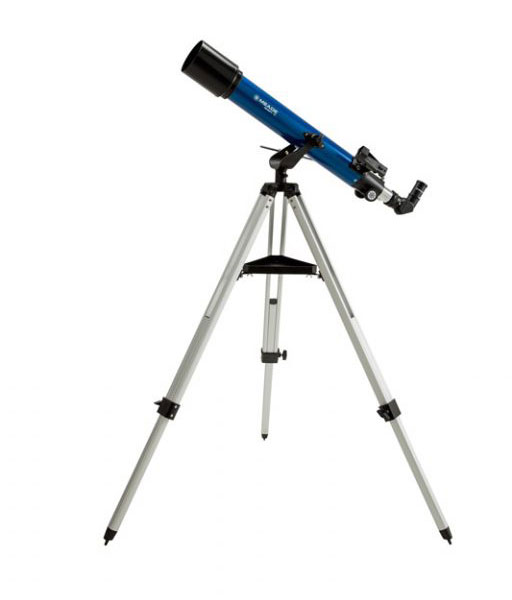
The Infinity, although also more suited to kids, does have more to offer than the PowerSeeker. The aperture is slightly bigger – 70mm as opposed to 60mm (aperture is nearly everything in telescopes) – which means more light is absorbed and more stars can be seen. The tripod is larger and sturdier, and the eyepieces have comfortable cups (the PowerSeeker doesn’t). There are two eyepieces: a 9mm with 78x magnification and a 26mm with 27x magnification. Ultimately, the Infinity seems more durable, but if you’re really interested in stargazing then the better-quality telescopes are recommended. When it comes to telescopes, you need to plunge in deep.
Meade Lightbridge 114MM
R2699, takelot.com
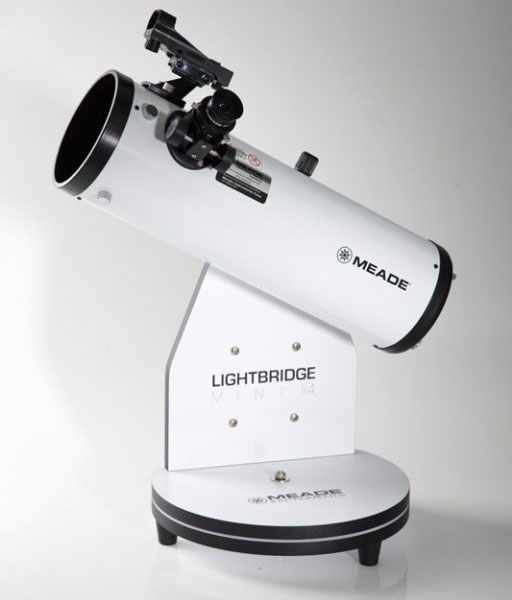
For R800 more, this would be a better investment. With a 114mm aperture, you can view a diverse range of planets, nebulae, galaxies and star clusters. It was the easiest and quickest telescope to set up as I just needed to fit the scope and eyepiece. It was also wonderfully light and portable, which is its most attractive feature considering that the best stargazing is far away from the city. The Meade could easily be stashed on the back seat of a car for a weekend away. It doesn’t come with a tripod so a sturdy table or chair will be needed to place it on. However, this Dobsonian telescope makes up for that with its smooth point-and-view design, with a 360-degree swivel mount that is easy to use (simpler telescopes only move up and down). I had my first real sense of discovery with it when I found the Horsehead Nebula in Orion’s Belt. The sight of the cloudy haze renewed my enthusiasm after less rewarding searches with the smaller scopes.
Celestron 90SLT
R10999, glagencies.co.za
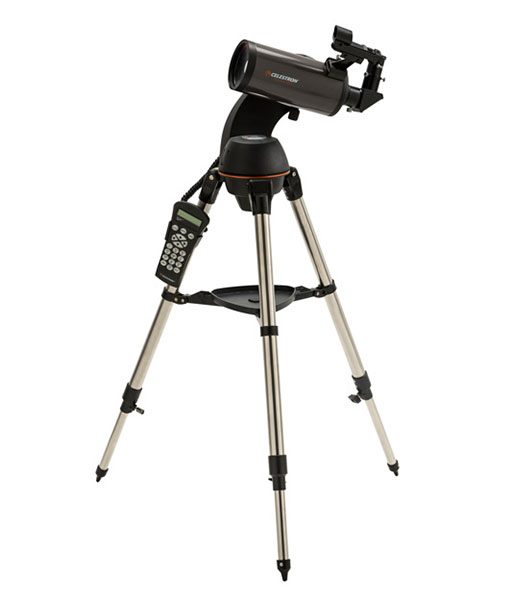
I didn’t truly grasp how vast the night sky is until I tried to pick out particular stars with a telescope. If you’re only slightly off , you end up being way off ! The 90SLT combats this problem with a built-in computer that automatically moves the telescope by itself to take you to the stars you want to see (it can locate more than 4000 celestial objects). The tricky part is initially aligning the telescope with any three bright celestial objects (you don’t need to know what they are). This set-up takes some practice (and drains batteries quickly, so rechargeable ones are recommended), but it does get easier after a few attempts. The motorised mount then tracks the object across the sky, ensuring you can keep your eye on something over a long period as it moves. The aperture is 90mm, which means the clarity is not as good as the Lightbridge’s, but for locating objects in the sky there’s no contest.
Malkin 10 X 50
R1199, capeunionmart.co.za
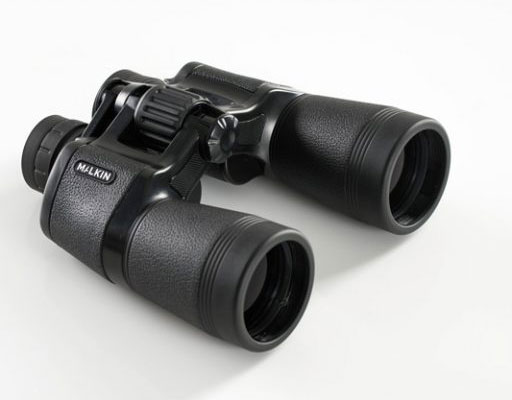
Cape Union Mart’s in-house brand might not enjoy the reputation of the stalwarts but the quality of the optics is surprisingly impressive. In fact, the Nikons were only slightly superior in terms of clarity and colour. They both use Porro prism, a type of reflection prism that alters the orientation of an image and provides greater depth perception. When it comes to stargazing, the 7 x 50 magnification is better as you have a wider field of view and less shake. The Malkins are slightly heavier, too, which can tire your arms after a while (some pros recommend a tripod for binoculars.). But if you’re okay with the weight and able to deal with the increased magnification, these binoculars – with their large aperture and clear optics – are a great stargazing tool.
Nikon 7 X 50 Aculon A211
R1595, ormsdirect.co.za
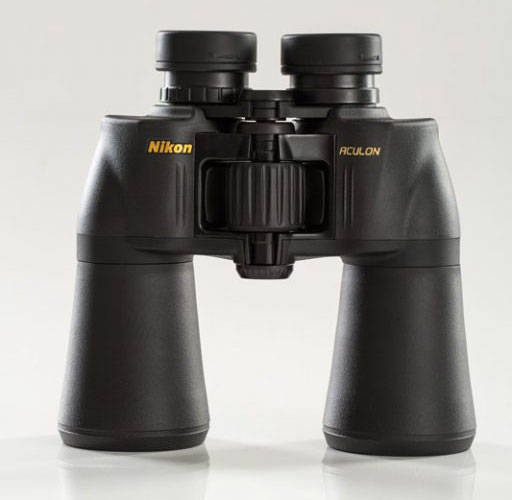
Most stargazing experts recommend a pair of 50mm x 7 binoculars. The 50mm aperture captures enough light while the short 7x magnification ensures there is not too much shake, which can be a problem with large distances. This pair is slightly lighter than the Malkins, so holding them up for long periods is manageable. The Aculon’s Porro prism system and multi-coated lenses ensure the image is bright, clear and bring out a surprising amount of detail – I could see the crisp outline of a star. A bonus is that these are perfect for birdwatching too, as they provide a good balance between field of view and image quality.
Binoculars Why test binoculars for stargazing? The experts say a good pair is ideal for the job – they’re in the same price bracket as a starter telescope, but much less hassle. We can see around 2500 stars with the naked eye; with binocs, we can see over 100 000.
Top stargazing tips
• Don’t rush out to buy a telescope as they can frustrate beginners. Rather acquaint yourself with the night sky first and get to know a few planets and constellations. Star maps, sky guides, apps and astronomy clubs are extremely helpful.
• Know when to look and track lunar events. The sky is best on clear winter nights when there’s no humidity in the air. Moonless nights (or nights close to new moon) are also best.
• Know the di�fference between planets and stars. If a bright light in the sky twinkles, it’s a star. If an object is much brighter than those around it, it’s probably a planet.
• Turn on the red light if you want to refer to a map or book while stargazing (or find your mug of Milo). A small penlight or red light (put a filter on your torch) won’t interfere with your night vision. It takes 30 minutes for one’s eyes to fully adapt to the night sky – and a moment of bright light to negate that adaptation.
• Be patient because, as you’ve probably heard, the universe is pretty big. This means finding objects can be tricky. Remember, the search is part of the fun.
• When it comes to buying a telescope, don’t skimp on quality. Look for two things: a sturdy mount and high-quality optics.
Oh, heavens!
• Most of the stars you see in the night sky are bigger and brighter than the sun. The dimmest of the 50 most prominent stars in our sky is Alpha Centauri, which is more than 1.5 times brighter than the sun.
• The farthest object spotted by the Hubble Space Telescope is a tiny red smudge about 13.4 billion light-years away, near the dawn of the birth of the universe.
• The object generally regarded as the most distant the average backyard astronomer can see is the quasar 3C273, about 2.5 billion light-years away.
• There are 200 – 400 billion stars in our Milky Way galaxy. The Hubble reveals an estimated 100 billion galaxies in the universe, but this number is likely to increase to about 200 billion as space telescope technology improves.
The Big Five of the African night sky�
Deep-sky objects represent the ‘great out there’, beyond our nearest neighbours and stretching to infinity. There are five classes of deep-sky objects, and five specimens of each class have been selected to represent our heavenly Big Five:
1. Southern Pleiades: an open star cluster
2. Omega Centauri: a globular cluster
3. Eta Carinae: a bright nebula
4. Coalsack: a dark nebula
5. Milky Way: a galaxy
You may also like
Related Posts
Camping is a great adventure and having the right gear (and nifty accessories) will make...
read more
Drone technology has come a long way in a short time – some drones are...
read more
Explore the depths of the ocean underwater and even take a nap with the fish...
read more